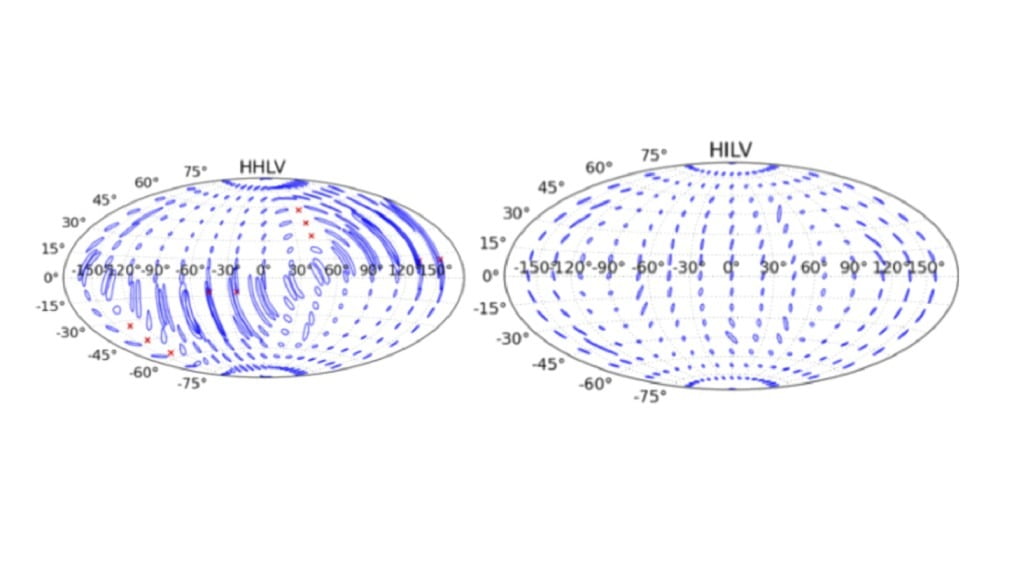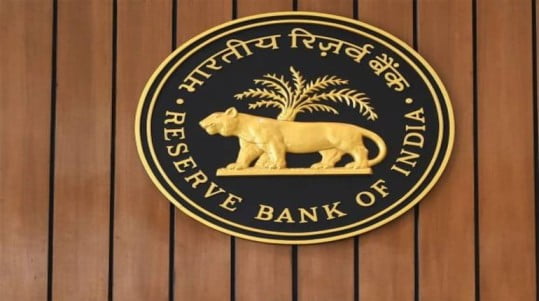Important Events held on 12th and 13th May
LIGO-India

Context: Prime Minister Narendra Modi recently, laid down the foundation
stone of LIGO-India on the occasion of National Technology Day.
About LIGO-India:
⦁ LIGO (Laser Interferometer Gravitational-Wave Observatory) is the world’s most powerful observatory.
⦁ It detects and helps understand the origins of gravitational waves by utilizing the physical properties of light and space.
⦁ Currently, there are two LIGO observatories in the US, which work together to detect gravitational waves, with a separation of 3000 kilometers.
⦁ Each LIGO detector consists of two arms.
⦁ LIGO-India will be the fifth node in the international network of gravitational wave observatories.
⦁ The location of LIGO-India will be in Maharashtra, India.
⦁ It is a collaborative project between a consortium of Indian research institutions, the LIGO Laboratory in the USA, and international partners.
⦁ The Department of Atomic Energy and the Department of Science and Technology in India will oversee its construction, with a memorandum of understanding (MoU) signed with the National Science Foundation of the US, as well as several national and international research and academic institutions.
⦁ LIGO-India involves collaboration between the LIGO Laboratory, Raja Ramanna Center for Advanced Technology (RRCAT) in Indore, Institute for Plasma Research (IPR) in Ahmedabad, and the Inter-University Centre for Astronomy and Astrophysics (IUCAA) in Pune.
⦁ Once completed, LIGO-India will join the global network of gravitational-wave observatories, which includes Virgo in Italy and KAGRA in Japan.
Significance:
⦁ LIGO-India will provide research opportunities for Indian youth in cutting-edge areas of science and technology.
⦁ It will contribute to advancements in gravitational-wave astronomy and astrophysics.
⦁ The project will foster the development of cutting-edge technologies.
Gravitational Waves:
⦁ Gravitational waves are invisible ripples in space that travel at the speed of light (186,000 miles per second).
⦁ These waves cause squeezing and stretching effects on objects as they pass through.
⦁ Einstein predicted that the motion of celestial bodies, such as planets or stars orbiting each other, creates these ripples in space.
⦁ Scientists refer to these ripples as gravitational waves, which propagate similarly to the ripples in a pond caused by a stone thrown in.
ABOUT INDIGO
⦁ IndIGO is an Indian initiative focused on gravitational-wave observations.
⦁ It aims to establish advanced experimental facilities and provide theoretical and computational support for a national project in gravitational-wave astronomy.
⦁ The IndIGO Consortium has been involved in developing the Indian road-map for Gravitational Wave Astronomy since 2009.
⦁ The consortium has devised a phased strategy for Indian participation in the construction of a crucial gravitational-wave observatory in the Asia-Pacific region.
⦁ The current major plan of IndIGO is the LIGO-India project.
⦁ LIGO-India is an advanced gravitational-wave detector that will be built and operated in collaboration with LIGO USA and international partners.
⦁ The detector will be located in India and contribute to global efforts in detecting and studying gravitational waves.
Gravitational-wave astronomy
⦁ Gravitational-wave science has the potential to answer important questions in fundamental physics, astrophysics, and cosmology.
⦁ It can help verify the theory of General Relativity and explore its validity under extreme gravity conditions.
⦁ Gravitational-wave research aims to understand the properties of gravitational waves and the nature of black holes.
⦁ It can provide insights into the equation of state of neutron stars and the abundance of stellar-mass and intermediate-mass black holes.
⦁ The merger history of galaxies and supermassive black holes, the central engine of gamma ray bursts, and the internal processes of supernovae can also be studied through gravitational waves.
⦁ It can shed light on the nature of dark energy and phase transitions in the early Universe.
⦁ Gravitational waves cause distortions in spacetime, resulting in small changes in physical distances.
⦁ Laser interferometers are used to detect these changes with high precision.
⦁ Interferometric GW detectors like LIGO, GEO600, Virgo, and TAMA300 have been constructed in the USA, Europe, and Japan.
⦁ These detectors use Michelson interferometers with Fabry-Perot cavities in each arm, ranging from several hundred meters to several kilometers in length.
⦁ By recycling laser power and utilizing power build-up techniques, strain sensitivity of h ~ 10^-22/√Hz can be achieved.
⦁ The KAGRA project in Japan, currently under construction, incorporates novel techniques such as cryogenic cooling and an underground location.
⦁ Over the next five years, these detectors will be upgraded to their advanced configurations.
⦁ With these advancements, the detectors will be capable of detecting binary neutron star coalescence up to a distance of 500 Mpc and binary black holes at a redshift of z = 2.
⦁ Advanced ground-based detectors are expected to observe gravitational wave signals at a rate of monthly or even weekly.
⦁ The design study for the third-generation ground-based interferometer, the Einstein Telescope, has been completed.
Indian Initiative in Gravitational-wave Observations: Ongoing Activities
LIGO-India Project:
⦁ Concept Proposal: The LIGO-India project aims to establish an advanced gravitational-wave detector in India. The concept proposal for LIGO-India is currently being actively considered by science funding agencies in both India and the USA.
⦁ Collaborative Effort: LIGO-India is envisioned as a collaborative project involving a consortium of Indian research institutions, the LIGO Laboratory in the USA, and international partners.
Importance of a Worldwide Detector Network:
⦁ Limitations of GW Detectors: GW detectors have inherent limitations such as limited sky coverage and poor pointing accuracy. Additionally, astrophysical signals can be weak. Therefore, a global detector network is crucial to establish confidence in initial detections and explore new astrophysics from these sources.
⦁ Optimal Location: Studies have identified the Indian Ocean region, with Australia and India as potential choices, as the optimal location for another detector to enhance the sensitivity of the existing global network.
⦁ GWIC Support: The GW International Committee’s Road Map Document strongly supports the GW experimental effort in India, recognizing the need for a worldwide detector network.
Opportunity for Indian Science:
⦁ Promising Research Frontier: Gravitational-wave observations present a promising experimental research frontier. India has the opportunity to launch a major initiative in this field well in advance of its expected growth.
⦁ IndIGO Collaboration: The IndIGO collaboration, consisting of Indian scientists and international advisory committee members, has conducted several meetings over the past year. They have discussed a phased strategy for constructing a large-scale GW detector in the Asia-Pacific region.
By focusing on the LIGO-India project and recognizing the importance of a worldwide detector network, India’s initiative in gravitational-wave observations is poised to contribute significantly to the field of astrophysics and advance scientific understanding of the universe. Important Events held on 12th and 13th May
Monlam Chenmo:

⦁ Annual Five-Day-Long Great Prayer Festival of Ladakh
⦁ Held annually in Ladakh, Monlam Chenmo is a significant festival.
⦁ Duration: Five days.
⦁ Purpose: Mass prayer camp by Buddhist monks and nuns for world peace and happiness.
⦁ Organized by: All Ladakh Gonpa Association.
⦁ Resuming after Covid: The event is taking place this year after a three-year hiatus due to the pandemic.
Details of Monlam Chenmo:
⦁ Gathering of the Sangha Community
⦁ Major annual prayer of the Sangha Community of Ladakh.
⦁ Represents a gathering of the Buddhist monastic community at one platform.
⦁ Date: Falls on the 21st to 25th days of the third month of the Tibetan lunar calendar.
⦁ Commencement: The festival has been held since 1991.
Seva for Sangha:
⦁ Special Camp for Sangha Community
⦁ A camp specifically organized for the Sangha Community.
⦁ Objective: Facilitate the Sangha Community in availing benefits from various government schemes.
⦁ Led by: Member of Parliament for Ladakh Constituency, Jamyang Tsering Namgyal, in collaboration with district administration Leh.
⦁ Inaugural event: The camp is being organized for the first time for the Sangha Community.
⦁ Government Scheme Benefits
⦁ Participation of different government departments and banks.
⦁ Purpose: Offer benefits of approximately 20 government schemes to the monks and nuns.
⦁ Collaboration with ITBP: Indo-Tibetan Border Police (ITBP) has joined hands with the organizers to set up medical camps during the event. Important Events held on 12th and 13th May
Poshan Bhi, Padhai Bhi: Strengthening Early Childhood Care and Education (ECCE)

About Poshan Bhi, Padhai Bhi:
⦁ Initiative launched by the Ministry of Women and Child Development.
⦁ Objective: Establish the world’s largest, universal, high-quality preschool network in India, aligned with NEP 2020.
⦁ Emphasizes the connection between primary education, early childhood health, and nutrition services.
Salient Features:
⦁ Targeting children’s development in various domains as per the National Curriculum Framework.
⦁ Physical and motor development, cognitive development, socio-emotional-ethical development, etc.
⦁ All States to adopt play-based, activity-based learning pedagogy recommended by the national ECCE task force.
⦁ Focus on developmental milestones of 0-3-year olds and 3-6-year olds.
⦁ Special support for Divyang (specially-abled) children.
⦁ Provision of at least two hours of high-quality preschool instruction daily for every child.
⦁ Strengthening Anganwadi Centres with:
⦁ High-quality infrastructure and play equipment.
⦁ Well-trained Anganwadi workers/teachers.
⦁ Mother tongue as the primary medium of instruction for teaching.
⦁ Provision of different teaching-learning materials (visual aids, audio aids, audio-visual aids, and bodily-kinesthetic aids) to Anganwadi Sewikas.
⦁ Building a Jan Andolan (people’s movement) to engage communities in strengthening the foundation of future generations. and this the Important Events held on 12th and 13th May
Reserve Bank of India’s Greenwashing TechSprint Application Window:

⦁ Application Window:
⦁ The Reserve Bank of India (RBI) has opened the application window for all India based firms and innovators.
⦁ The application window is for participating in the Global Financial Innovation Network (GFIN)’s first ever Greenwashing TechSprint.
⦁ The application window will close on May 21, 2023.
RBI’s Participation in GFIN’s Greenwashing TechSprint:
⦁ Involvement of RBI:
⦁ RBI will be one of the 13 international regulators taking part in GFIN’s Greenwashing TechSprint.
⦁ The TechSprint aims to address GFIN’s priority on environmental, social, and governance (ESG) and sustainable finance.
Objective and Participants of the TechSprint:
⦁ Objective:
⦁ The objective of the TechSprint is to develop a tool that can effectively tackle or mitigate the risks of greenwashing in financial services.
⦁ Participants:
⦁ The TechSprint will bring together 13 international regulators, firms, and innovators.
⦁ It will provide firms the opportunity to work with regulatory experts, stakeholders, and professionals from around the world.
TechSprint Process and Timeline:
⦁ TechSprint Process:
⦁ The TechSprint will be a virtual event hosted on the Financial Conduct Authority’s (FCA) Digital Sandbox.
⦁ The event will involve collaborative efforts between regulators, firms, and innovators to address sustainable finance.
⦁ Timeline:
⦁ Application process support will be provided by GFIN through an information pack for interested firms.
⦁ Successful firms will proceed to on-boarding on June 1 and 2, which includes training on the Digital Sandbox and an overview of the TechSprint process.
⦁ The TechSprint will officially launch on June 5 and run for three months.
⦁ The event will conclude with a showcase day in September 2023.
this are the Important Events held on 12th and 13th May
Kandela IAS recognizes the value of keeping abreast of current events and offers a diverse range of courses to help you stay informed of the latest developments and trends. Kandela IAS team of experienced faculty members is committed to delivering top-quality education that equips you with the knowledge and skills necessary to succeed in your profession. Our blog post, “Important Events held on 12th and 13th May,” provides you with valuable information about significant happenings worldwide. Moreover, Kandela IAS provide comprehensive current affairs courses that encompass a broad range of topics, including politics, economics, sports, and entertainment.
So, if you want to achieve your career objectives, enroll in our courses today and take advantage of the learning opportunities we provide. And also Subscribe for our Youtube Channel Kandela IAS For more updates
Important Events held on 12th and 13th May
